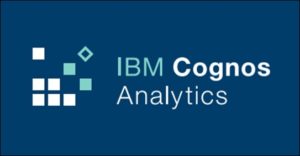Description
Introduction of Storytelling with Tableau:
Data storytelling is a powerful way to convey insights and drive action. “Storytelling with Tableau: Creating Compelling Data Narratives” is a specialized training course that focuses on transforming data into engaging, persuasive stories using Tableau. This course is designed to help you develop the skills to craft data-driven narratives that resonate with your audience. You’ll learn how to structure your stories, choose the right visualizations, and use Tableau’s storytelling features to create interactive, impactful presentations. By the end of this course, you will be able to use Tableau not just as a tool for visualization, but as a medium for storytelling.
Prerequisites:
- Basic understanding of Tableau (creating visualizations, dashboards)
- Familiarity with data analysis concepts and practices
- Experience with basic storytelling or presentation techniques is beneficial
Table of Contents:
1: Introduction to Data Storytelling
1.1: The Art and Science of Data Storytelling
1.1.1: What is data storytelling, and why is it important?
1.1.2: The role of narrative in data-driven decision-making
1.1.3: Key elements of a compelling data story: context, insights, and action
1.2: Introduction to Tableau for Storytelling
1.2.1: Overview of Tableau’s storytelling capabilities
1.2.2: Understanding the difference between dashboards and stories
1.2.3: Examples of effective data stories in Tableau(Ref: Tableau for Business Intelligence: Driving Data-Driven Decisions)
1.3: Planning Your Data Story
1.3.1: Identifying your audience and their needs
1.3.2: Defining the purpose of your data story
1.3.3: Structuring your narrative: Beginning, middle, and end
2: Designing Effective Visualizations for Storytelling
2.1: Choosing the Right Visualizations
2.1.1: Selecting visualizations that support your narrative
2.1.2: Matching chart types to the story you want to tell
2.1.3: Avoiding common visualization pitfalls (e.g., misleading charts)
2.2: Design Principles for Data Stories
2.2.1: Clarity, simplicity, and focus in visual storytelling
2.2.2: The importance of context and annotations
2.2.3: Using color, typography, and layout to enhance your narrative
2.3: Enhancing Visualizations with Tableau
2.3.1: Adding annotations, tooltips, and reference lines
2.3.2: Highlighting key data points and trends
2.3.3: Creating visual hierarchies and focal points
3: Crafting Your Data Narrative
3.1: Building the Narrative Flow
3.1.1: Connecting data insights with storytelling techniques
3.1.2: Creating a logical flow between visualizations
3.1.3: Using transitions and sequencing to guide the audience
3.2: Incorporating Context and Commentary
3.2.1: Adding text and commentary to support your visuals
3.2.2: Providing context through descriptive captions and titles
3.2.3: Crafting compelling narratives with data-driven commentary
3.3: Engaging Your Audience
3.3.1: Using interactivity to keep your audience engaged
3.3.2: Leveraging Tableau’s interactivity features (filters, highlights)
3.3.3: Techniques for making your story more relatable and impactful
4: Creating Interactive Stories with Tableau
4.1: Introduction to Tableau Story Points
4.1.1: Understanding Story Points and their role in storytelling
4.1.2: Creating and organizing Story Points in Tableau
4.1.3: Best practices for using Story Points effectively
4.2: Designing Interactive Storytelling Experiences
4.2.1: Adding interactivity to your data stories
4.2.2: Using actions to create dynamic narratives
4.2.3: Incorporating user input and feedback in your stories
4.3: Combining Dashboards and Stories
4.3.1: Integrating dashboards within your data story
4.3.2: Creating seamless transitions between dashboards and Story Points
4.3.3: Designing stories that adapt to different audiences and devices
5: Publishing and Presenting Your Data Story
5.1: Preparing Your Story for Presentation
5.1.1: Finalizing the structure and flow of your narrative
5.1.2: Refining visualizations for clarity and impact
5.1.3: Ensuring your story is accessible and understandable
5.2: Presenting Your Story with Tableau
5.2.1: Techniques for effective data presentations
5.2.2: Using Tableau in live presentations: Tips and tricks
5.2.3: Handling questions and feedback during presentations
5.3: Publishing and Sharing Your Story
5.3.1: Publishing stories to Tableau Public, Server, or Online
5.3.2: Sharing your story with different audiences
5.3.3: Embedding Tableau stories in websites and other platforms
6: Real-World Applications and Best Practices
6.1: Case Studies in Data Storytelling
6.1.1: Analyzing successful data stories across industries
6.1.2: Lessons learned from real-world storytelling projects
6.1.3: Discussion of different storytelling approaches
6.2: Overcoming Common Challenges
6.2.1: Handling complex or messy data in storytelling
6.2.2: Balancing data accuracy with narrative simplicity
6.2.3: Adapting your story for different audiences and contexts
6.3: Advanced Techniques in Data Storytelling
6.3.1: Leveraging advanced Tableau features for storytelling
6.3.2: Using animations and transitions to enhance the narrative
6.3.3: Exploring the future of data storytelling with Tableau
7: Capstone Project and Review
7.1: Capstone Project Overview
7.1.1: Project guidelines and expectations
7.1.2: Selecting a dataset and defining your story
7.1.3: Designing and building a complete data narrative
7.2: Project Work and Presentations
7.2.1: Working on individual capstone projects
7.2.2: Peer review and group feedback sessions
7.2.3: Final project presentations
7.3: Final Review and Next Steps
7.3.1: Summary of key concepts and techniques
7.3.2: Exploring additional resources and advanced topics
7.3.3: Course conclusion and participant feedback
This course is designed to empower you to use Tableau as a tool for storytelling, helping you transform data into compelling narratives that drive understanding and action. The capstone project will allow you to apply these techniques in a practical context, ensuring that you can effectively communicate data insights through storytelling.
If you are looking for customized info, Please contact us here







Reviews
There are no reviews yet.